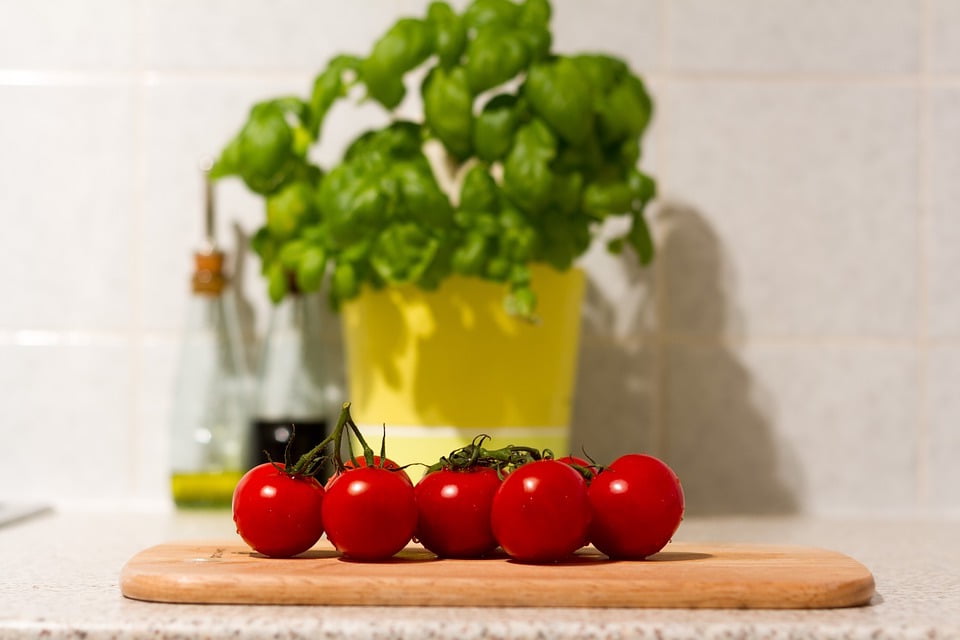As Australians we are so fortunate to be able to enjoy this wonderful multi-cultural country of ours. Migrants to this country over the years have brought their cultures, customs and cuisines from countries right around the world and so many of these traditions have been adopted and embraced by Australians.

Beautiful fragrant basil
Over the last sixty or so years our basic Australian dishes have changed to include newly introduced food, spices, and tastes from all parts of the globe. We’ve become more adventurous, more experimental with different tastes of vegetables, herbs, meats and even cheeses; all of which in the past, were relatively unknown to us outside of the typical Australian fare of the early colonial days in this country.
I clearly recall as a child growing up in an inner Adelaide suburb, a wonderful Greek family shifted into the house opposite our place. This large friendly family had a huge impact on my life and they would often invite our family to share some of their food; tasty honey buns, herbal coated roast potatoes and lamb smothered in home made tomato or basil sauce followed, by tiny glass dishes of home made jam.

My siblings and I loved to roam in their large abundant vegetable garden which was always filled with in-season veggies. The whole family tended their garden most days and they produced ripe plump tomatoes, giant eggplant (something that we’d never seen before), little known zucchinis and various types of herbs like basil, oregano and garlic; all of which they would share with many of their neighbours. We weren’t familiar with herbs like basil, oregano, marjoram and coriander as our herb garden consisted mainly of traditional herbs like mint, parsley, sage, rosemary and thyme. These new taste sensations inspired us to grow them ourselves and include them in our traditional English dishes and hence this unleashed a whole new era in our Australian cuisine.
I had my first taste of the pungent home grown sweet basil and loved it, and even now to this very day, the spicy aroma and delicious taste of Basil takes me right back to my carefree days as a child growing up with this friendly, fun loving Greek family. We shared our culture, our food, our language and I was often invited to be a bridesmaid at a true Greek wedding. It was such a joy and honour to be part of this rich, diverse Greek culture.

Here I am at that wonderful Greek wedding. Spot me with white skin and blonde hair blue eyes whilst all the rest are dark haired, brown eyes and beautiful brown skin!!
Basil’s botanical name “Basilcum” is believed to have regal associations and because the spicy smell was so sought after, it was declared “fit for a king”.
Basil’s mouth-watering aroma and taste makes it an extremely versatile herb and often when we think of basil we think of tomatoes. It’s an excellent accompaniment for tomato and if you plant basil near your tomatoes in the garden, or even in pots located near the veggie garden it may help repel white fly and other bugs that often attack these soft foliaged plants.
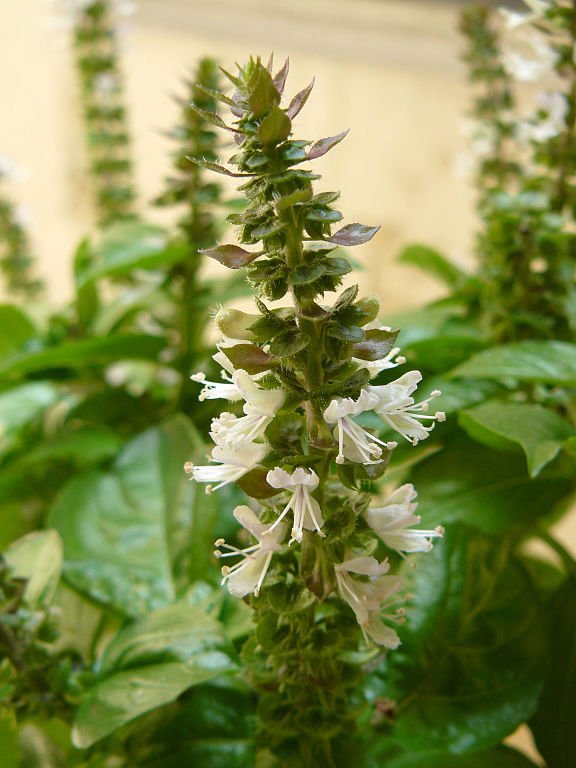
Basil flower
In the temperate regions of our country, basil should be planted in late spring in a warm sunny spot away from the wind and certainly after the last of the frosty weather. It grows best in well-drained soil but don’t over water it because it can be prone to damping off. It’s best to water basil in the early part of the day because late evening watering, can cause rotting of the stems.
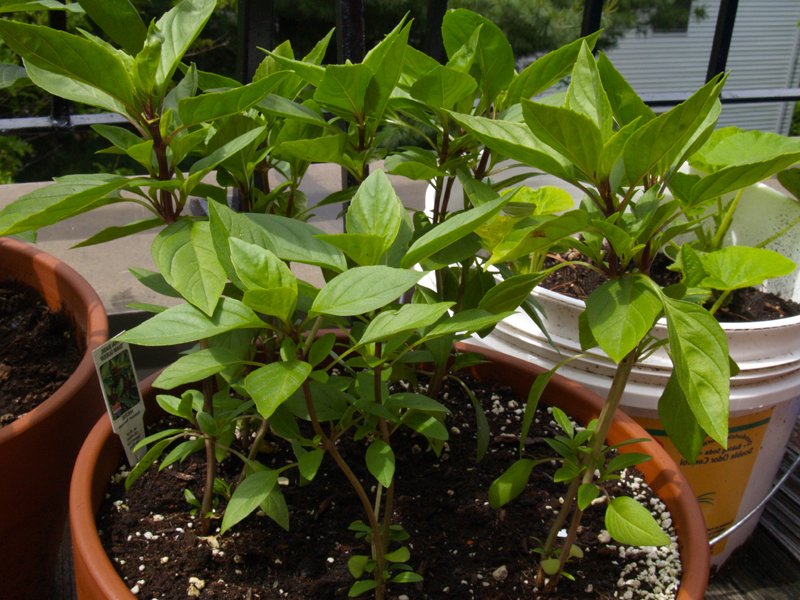
Thai basil. Photo Ies
There’s a huge variety of basil including lemon, bush, holy, dark opal, Thai, liquorice, spicy globe and the most popular type is probably sweet basil. In the southern states of Australia, basil will only survive during the warm summer months unless it’s grown in a glass house. Because it’s only an annual in this region, it is a good idea to preserve it for winter when it’s not available. Using a pastry brush coat the basil leaves lightly with olive oil and place them in freezer bags and put into the freezer for use during the winter months.
Alternatively tear the leaves into smaller pieces to release the flavour and put them into ice block containers with a little water. Freeze them and use the basil iceblocks in soups and sauces during the winter months. Another way of preserving this pungent herb is to make up basil oil, basil vinegar or pesto sauce.

Grow basil in a pot near the window
Grow basil in pots near windows and doors to deter flies and add a few fresh basil leaves to your bath water for an invigorating bath and an excellent skin tonic. Medicinally, a tea made from basil leaves or flowers can aid digestion and help treat mental fatigue, nervous tension, cold symptoms and travel sickness as well as help ease the pain of a headache. It is an all rounder and basil leaves steeped in white wine makes an excellent pick up tonic.
Basil oil is an important herb that’s used extensively in aromatherapy and dried basil leaves make a great addition to a spicy pot potpourri along with coriander seeds, thyme, lemon verbena and anise stars.
#gallery-1 {margin: auto;}#gallery-1 .gallery-item {float: left;margin-top: 10px;text-align: center;width: 33%;}#gallery-1 img {border: 2px solid #cfcfcf;}#gallery-1 .gallery-caption {margin-left: 0;}/* see gallery_shortcode() in wp-includes/media.php */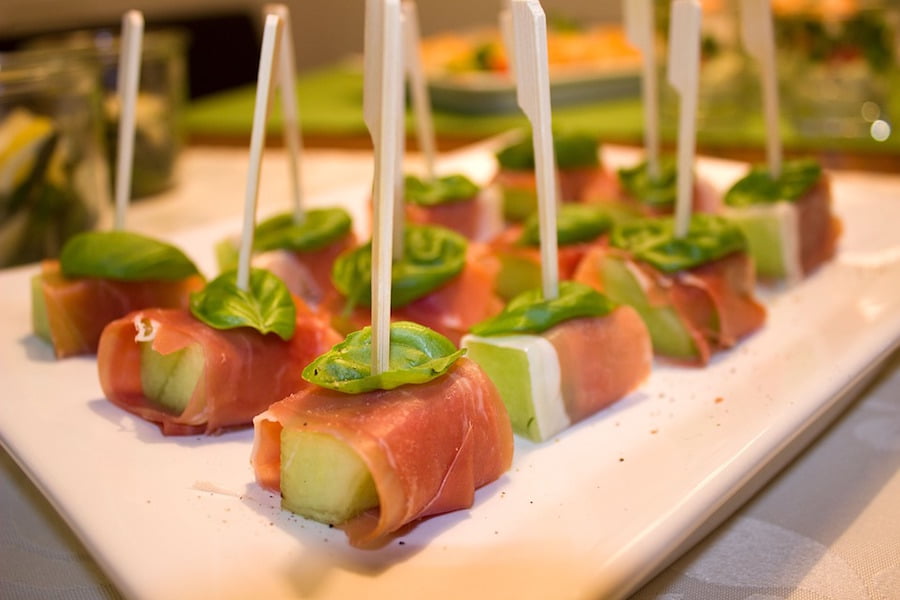 Basil, melon and prosciutto
Basil, melon and prosciutto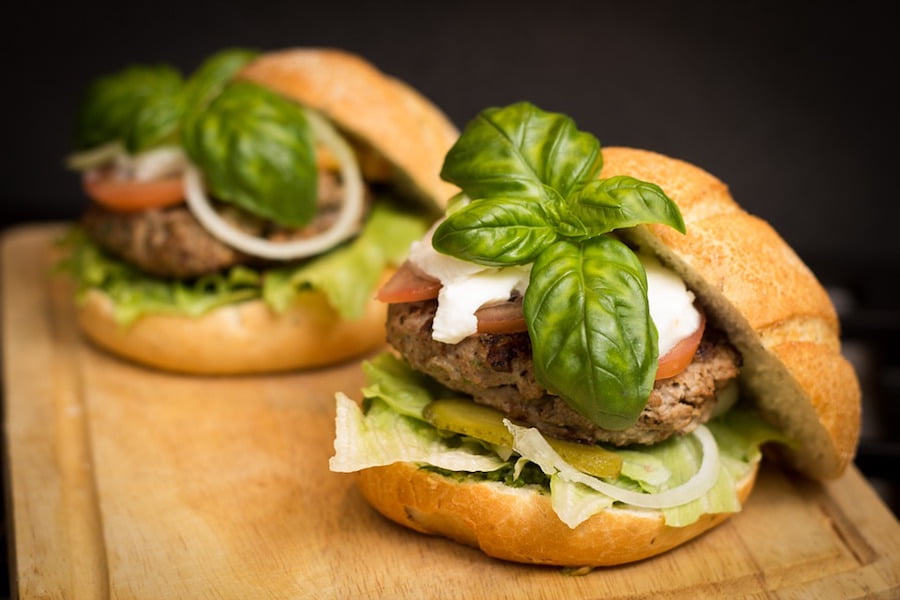 Add basil to hamburgers
Add basil to hamburgers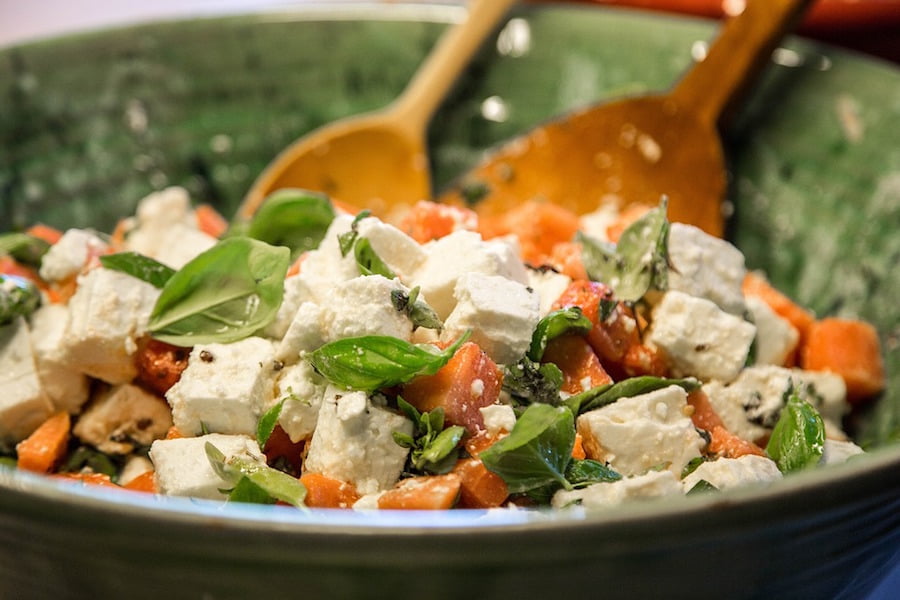 Add basil to your salads
Add basil to your salads Caprese with basil
Caprese with basil
To retain the true flavour of basil, tear the leaves rather than chop them and add to cooked dishes like stews, casseroles and stir fries at the very last minute of cooking. Basil can be added to soups, salads, vegetable, meat and fish dishes and it goes extremely well with garlic and poultry. A very versatile culinary herb – beautiful sweet basil.
RECIPE – Stuffed Basil Tomatoes
For a quick tasty snack try this recipe that our wonderful Greek neighbours shared with us all those years ago – Stuffed Basil Tomatoes.
Combine one cup of breadcrumbs with half a cup of shredded tasty cheese, two tablespoons of chopped garlic chives, some freshly ground pepper, two dessert spoons of finely torn sweet basil and four tablespoons of sour cream.
Mix well and heap this mixture on top of four large tomatoes that have been cut in halves. Place in a baking dish and bake in a moderate oven for about three-quarters of an hour or, until the tomatoes are soft. Remove from the oven and garnish with fresh basil and serve while hot.
